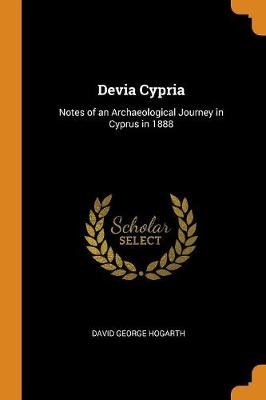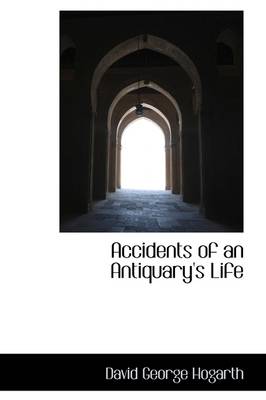Cambridge Library Collection - Archaeology
5 total works
The distinguished archaeologist David G. Hogarth (1862-1927) excavated in Cyprus, Egypt, Greece and Asia Minor over the course of his career. He wrote books about his excavations and travels to bring archaeology to a popular audience. His A Wandering Scholar in the Levant (1896; also reissued in this series) was described by T. E. Lawrence as 'one of the best travel books ever written'. Hogarth later became president of the Royal Geographical Society, and Keeper of the Ashmolean Museum, Oxford, from 1908 to 1927. This work, first published in 1889, describes his travels around Cyprus in the summer following his excavations at Old Paphos. He visited areas that had not been examined by archaeologists before, and the book contains many illustrations of buildings and objects he found during his journey, providing details of sites and landscapes still of interest to those studying the history of the island or of archaeology.
The archaeologist D. G. Hogarth (1862-1927) was, when he died, keeper of the Ashmolean Museum and president of the Royal Geographical Society, whose gold medal he was also awarded. This 1910 book is his account of various episodes in his career from 1897, when he covered the Cretan revolt against Turkey for The Times, to his 1907 excavations in Asyut, Egypt. A mixture of travel writing and archaeological reporting - the volume also contains an academic report on the excavation of Carchemish - this book, a follow-up to his A Wandering Scholar in the Levant (also reissued in this series), and intended for a popular audience, remains a highly readable account of the practicalities behind Hogarth's intellectual career. It also provides background to Hogarth's political involvement with the Near East, as acting director of the Arab Bureau in Cairo during the First World War and an attendee at the Versailles peace conference.
The archaeologist D. G. Hogarth (1862–1927) was, when he died, keeper of the Ashmolean Museum and president of the Royal Geographical Society. During his career he excavated in Cyprus, Egypt, Greece and Asia Minor. His books about his travels and excavations were well received and A Wandering Scholar in the Levant of 1896 (also reissued in this series) was described by T. E. Lawrence as 'one of the best travel books ever written'. This work, first published in 1909, contains six lectures on the origins of Ionia. Hogarth presents and evaluates the theories of the origins of Ionian culture that were popular at the time, and in the course of his discussion he delivers the results of some of his own excavations, including those at Ephesus in 1904. The work remains of interest to scholars and students of the region and of the history of archaeology.
The archaeologist D. G. Hogarth (1862–1927) was, when he died, keeper of the Ashmolean Museum and president of the Royal Geographical Society. He was instrumental in launching T. E. Lawrence's career, employing him at Carchemish and encouraging him to learn Arabic. This book, published in 1896 and described by Lawrence as 'one of the best travel books ever written', relates a journey through Ottoman Turkey, with additional chapters on Egypt and Cyprus. It combines a highly readable account of the practicalities and pitfalls of archaeology with Hogarth's (often unsympathetic) opinions on political problems of the area, including the position of the Armenians and Kurds. Hogarth subsequently became acting director of the Arab Bureau in Cairo during the First World War, and attended the Versailles peace conference. This book illuminates the experiences that developed Hogarth's political views and the close relationship between archaeology and politics in the Middle East in the period.
The archaeologist D. G. Hogarth (1862–1927) was, when he died, keeper of the Ashmolean Museum and president of the Royal Geographical Society. He was instrumental in launching T. E. Lawrence's career, and himself became acting director of the Arab Bureau in Cairo during the First World War, also attending the Versailles and Sèvres peace conferences. This 1902 book is a regional study of the area from the Balkans to Iran, including north-east Africa. His survey, broadly based in geographical determinism, discusses geology, climate, and communication routes, as well as population distribution, ethnicity, and agriculture - including prescient observations about the conflicts of geography and ethnicity - and provides fascinating evidence for the British perception of the area in the build-up to the conflict. It also illuminates the close relationship between archaeological and political interests in the period and Hogarth's wide-ranging career in both fields.


